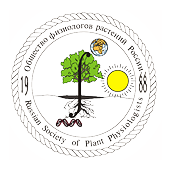Новости науки и практики // Июль 2020

Plant tissue engineering improves drought and salinity tolerance
Engineered tissue succulence is expected to provide an effective strategy for improving water?use efficiency, drought avoidance or attenuation, salinity tolerance and for optimizing performance of CAM (crassulacean acid metabolism).
https://www.eurekalert.org/
Brassinosteroids Inhibit Autotropic Root Straightening by Modifying Filamentous-Actin Organization and Dynamics
When positioned horizontally, roots grow down toward the direction of gravity. This phenomenon, called gravitropism, is influenced by most of the major plant hormones including brassinosteroids. Epi-brassinolide (eBL) was previously shown to enhance root gravitropism, a phenomenon similar to the response of roots exposed to the actin inhibitor, latrunculin B (LatB). This led de Bang et al. to hypothesize that eBL might enhance root gravitropism through its effects on filamentous-actin (F-actin). This hypothesis was tested by comparing gravitropic responses of maize (Zea mays) roots treated with eBL or LatB. LatB- and eBL-treated roots displayed similar enhanced downward growth compared with controls when vertical roots were oriented horizontally.
https://www.frontiersin.org/
Scientists develop novel predictable multi-nucleotide deletion systems in plants
A research has been focusing on developing novel technologies to achieve efficient and specific genome engineering. Based on the cytidine deamination and base excision repair (BER) mechanism, the researchers developed a series of APOBEC-Cas9 fusion-induced deletion systems (AFIDs) that combine Cas9 with human APOBEC3A (A3A), uracil DNA-glucosidase (UDG) and AP lyase, and successfully induced novel precise, predictable multi-nucleotide deletions in rice and wheat genomes.
https://www.eurekalert.org/
Redox states in subcellular compartments of plant cells estimated with protein sensors
Scientists adopted fluorescent protein sensors to specifically monitor in planta dynamic changes in NADPH and NADH/NAD+ ratio in young leaves.
https://www.eurekalert.org/
New research reveals plant control with the power of light
The development reveals how coloured light can be used to control biological processes in plants by switching different genes on and off.
https://www.eurekalert.org/
Why are plants green?
UC Riverside-led research team's model to explain photosynthesis lays out the next challenging phase of research on how green plants transform light energy into chemical energy.
https://www.eurekalert.org/
Growing the nuclear envelope proteome
Identifying protein components of the nuclear envelope is a slow and challenging process. Now a proximity labelling technique adapted for plants reveals novel protein components in this under-researched membrane.
https://www.nature.com/
Research in land plants shows nanoplastics accumulating in tissues
UMass Amherst, Shandong University offer one of the first nanoplastics studies in land plants.
https://www.eurekalert.org/
Biologists unravel tangled mystery of plant cell growth
Insight could lead to bigger crops and better yields.
https://www.eurekalert.org/
Plants are marvelous chemists, as the gardenia's DNA shows
The species' newly sequenced genome highlights how evolutionary tinkering transforms plants into some of nature's great chemical-makers.
https://www.eurekalert.org/
The balancing act between plant growth and defense
Plant gene found to regulate control over whether a plant grows or puts up its defenses against pathogens.
https://www.eurekalert.org/
Wounded plants: How they coordinate their healing
Scientists discovered governing factors within plant regeneration.
https://www.eurekalert.org/
Thicker roots: to grow or not to grow? Investigating the dynamics of secondary root growth
Secondary growth of the roots of annual dicots has functional significance with regards to soil resource acquisition and transport, interactions with soil organisms and carbon sequestration.
https://www.botany.one/2020/
Where do halophytes grow? Influence of elevation, flooding, and salinity in a non-tidal saltmarsh
So, in the non-tidal saltmarshes of National Park, where do halophytes grow? For perennials, it depends on elevation. For annuals, it depends on flooding period. For individual species, it depends on salinity. And, for the future, it will depend on mitigating the impacts of climate change for these saltmarsh habitats.
https://www.botany.one/2020/
Going below ground: how some of the diversity in plant root morphology arose
A major transition in plant growth habit may have driven evolution of certain root traits
https://www.botany.one/2020/
Study tracks decades of life cycle changes in nonwoody plants
For 25 years, Carol Augspurger visited a patch of ancient woods near Urbana, Illinois to look at the same 25 one-square-meter plots of earth she first demarcated for study in 1993. Her 600,000+ observations revealed that herbaceous plants are shifting their schedules in response to climate change, with distinct patterns for early- and late-spring-emerging plants.
https://www.sciencedaily.com/
Showtime for photosynthesis
Using a unique combination of nanoscale imaging and chemical analysis, researchers have revealed a key step in the molecular mechanism behind the water splitting reaction of photosynthesis, a finding that could help inform the design of renewable energy technology.
https://www.sciencedaily.com/
Metabolic Cellular Communications: Feedback Mechanisms between Membrane Lipid Homeostasis and Plant Development
Boutté and Jaillais review several recent examples of lipid metabolic changes highlighting the intricate feedbacks between membrane lipid homeostasis and plant development.
https://www.cell.com/
Новости
Новости науки и практики // Июль 2024
Обзор научных новостей, опубликованных во всемирной паутине за последний месяцНовости науки и практики // Июнь 2024
Обзор научных новостей, опубликованных во всемирной паутине за последний месяцНовости науки и практики // Май 2024
Обзор научных новостей, опубликованных во всемирной паутине за последний месяц


Объявления
Записей не найдено.



